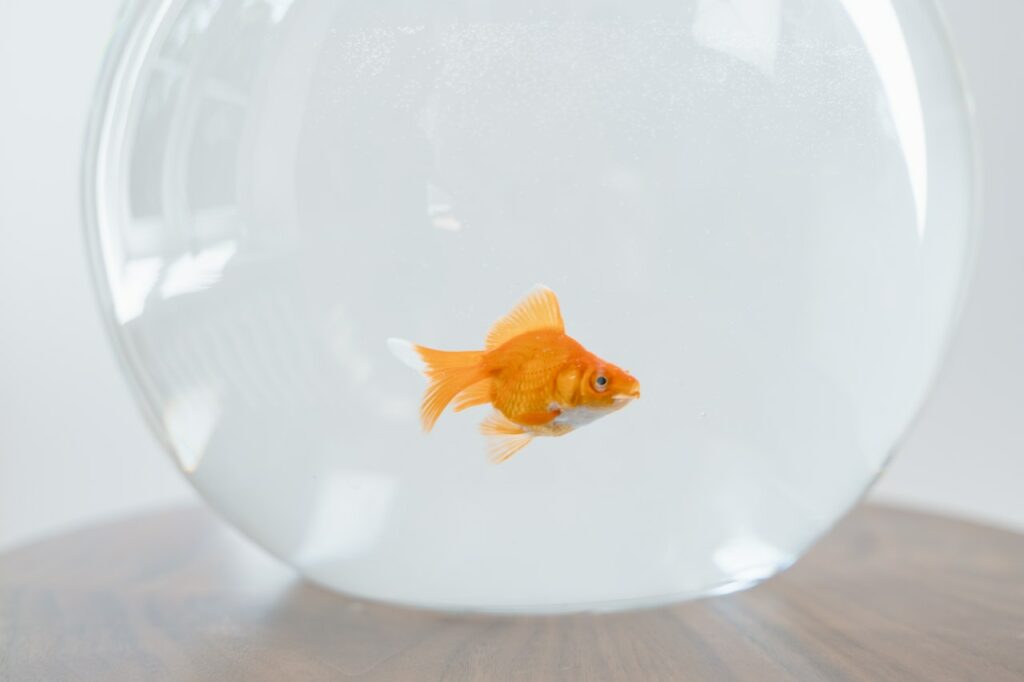7 Best Pets for College Students (Pros & Cons)
As a college student, you may need a companion to keep you company and help you cope with the stress of academic life. Getting a pet can be an excellent choice, but it comes with its own set of responsibilities. In this article, we’ll talk about the 7 best pets for college students and their average costs, pros, and cons!
1. Fish

Fish are a popular choice for college students because they are low-maintenance and don’t require a lot of space. All you need is a small tank, some water, and a few decorations, and you’re good to go. Fish are also quiet and won’t disturb your roommates or neighbors; they can be calming in your room.
Cost: A primary fish tank can cost between $20 and $50, depending on the size and the type of fish you want. You’ll also need to factor in the fish food cost and any tank decorations.
Pros: Fish are easy to take care of and can be very relaxing to watch. They also come in a wide variety of colors and shapes.
Cons: Fish don’t provide the same level of interaction as other pets, and they can be prone to health problems if their tank is not maintained correctly.
2. Guinea Pigs

Guinea pigs are gregarious creatures that require little attention. They only take up a little space, and their cages are simple to clean. They are very lively and playful, which is entertaining to observe. Guinea pigs are peaceful and will not bother your roommates or neighbors.
Cost: A guinea pig can cost between $20 and $40, and you’ll also need to factor in the price of a cage, bedding, food, and other supplies.
Pros: Guinea pigs are social animals that enjoy human interaction and are easy to care for. They also have a long lifespan, so you’ll have plenty of time to enjoy their company.
Cons: Guinea pigs can be prone to health problems, requiring a specific diet and plenty of exercise.
3. Hamsters

Hamsters are another low-maintenance pet that is perfect for college students. They don’t require a lot of space, and their cages are easy to clean. Hamsters are also active and playful, and they can provide hours of entertainment. However, they are nocturnal so they may be noisy at night.
Cost: A hamster can cost between $10 and $20, and you’ll also need to factor in the cost of a cage, bedding, food, and other supplies.
Pros: Hamsters are fun to watch and easy to take care of, and they can provide hours of entertainment. They also have a relatively long lifespan.
Cons: Hamsters are nocturnal, so they may be noisy at night, and they can be prone to health problems if their cage is not properly maintained.
4. Cats

Cats are famous for college students because they are independent and require less attention than dogs. They are also quiet and won’t disturb your roommates or neighbors. Cats are also relatively low-maintenance but require regular litter box cleaning and occasional grooming.
Cost: A cat can cost between $50 and $100, and you’ll also need to consider in the price of food, litter, and other supplies.
Pros: Cats are independent animals that don’t require as much attention as dogs and are very clean.
Cons: Cats can be aloof and may not provide as much interaction as other pets. They may also be prone to health problems, especially as they age.
5. Small Dogs

Chihuahuas, Pomeranians, and Shih Tzus are famous among college students since they are minors and do not require as much space as larger dogs. They are also low-maintenance, although they do require regular exercise and grooming.
Cost: A small dog can cost between $200 and $500, and you’ll also need to factor in the price of dog food, toys, and other supplies.
Pros: Small dogs are great companions and can provide a lot of interaction. They are also portable and can accompany you on walks or trips.
Cons: Small dogs can be yappy and may not get along with other pets or people. They may also be prone to health problems, especially as they age.
6. Reptiles

Reptiles such as bearded dragons, geckos, and snakes are not as popular as other pets for college students, but they can be a good alternative for those interested. They are low-maintenance and take up less room than other pets. They do, however, have unique heating and lighting requirements.
Cost: A reptile can cost between $50 and $300, depending on the type of reptile and the equipment needed for their enclosure.
Pros: Reptiles are unique and fascinating pets that can provide hours of entertainment. They also don’t require as much interaction as other pets.
Cons: Reptiles require specific heating and lighting requirements, which can be expensive and difficult to maintain. They may also be prone to health problems if their enclosure is not properly maintained.
7. Birds

Birds are another common pet choice for college students, especially for those who want a pet that can interact with them and be trained. They are incredibly low-maintenance and can be maintained in small cages, making them an excellent choice for dormitories or flats.
Cost: The cost of a bird can vary widely depending on the species, but they can cost between $50 and $500. In addition, you’ll need to factor in the cost of a cage, food, and toys.
Pros: Birds are intelligent and social creatures that can provide a lot of interaction and companionship. They are also relatively low-maintenance and can be trained to do tricks or mimic speech.
Cons: Birds can be noisy and may not be a good choice for college students who live in apartments or have roommates who are sensitive to noise. They also require regular cleaning of their cage and may require special diets or supplements to maintain their health.
Benefits of having pets as college students

Having a pet as a college student can offer numerous benefits, including
- Reducing Stress
College can be a stressful time, but having a pet can help alleviate some of that stress. Spending time with a pet has been shown to lower cortisol levels, which is the hormone associated with stress. - Providing Companionship
College students may be away from home and family for the first time, but having a pet can provide a sense of companionship and reduce feelings of loneliness. - Promoting Physical Activity
Pets, especially dogs, require regular exercise, which can help college students stay active and maintain a healthy lifestyle. - Teaching Responsibility
Caring for a pet requires responsibility, such as feeding, grooming, and providing medical care. This can help college students learn valuable life skills and develop a sense of responsibility. - Improving Mental Health
Pets have been shown to improve mental health by providing emotional support and reducing symptoms of depression and anxiety. - Providing a Sense of Purpose
College students may feel lost or unsure of their purpose, but having a pet to care for can provide a sense of purpose and fulfillment.
How to find pets as college students?

There are several ways college students can find pets, including
- Animal Shelters
Local animal shelters often have pets available for adoption. College students can visit the top and interact with the pets to find one that suits their lifestyle and personality. - Pet Stores
Pet stores like fish, hamsters, and guinea pigs may have pets available for purchase. It’s important to ensure that the store is reputable and that the animals are healthy. - Online Marketplaces
Online marketplaces like Craigslist and Facebook Marketplace may have pets available for adoption or purchase. However, it’s essential to exercise caution when using these platforms and to ensure that the seller is reputable. - Breeders
Some college students may be interested in purchasing a specific breed of pet from a breeder. It’s essential to ensure that the breeder is reputable and that the animals are healthy. - Friends and Family
College students may have friends or family members looking to rehome a pet or have a litter of puppies or kittens available for adoption.
Regardless of where college students find their pets, it’s essential to ensure that the animal is healthy and that they have the resources and time to provide the necessary care. It’s also vital to research the pet’s needs before bringing them home, such as dietary requirements, exercise needs, and medical care.
Summary
It is critical to consider your lifestyle, living circumstances, and finances before selecting a pet. Some pets, such as dogs, demand a lot of care and exercise, but others, like fish, are low-maintenance. Some pets like reptiles, require special care, but cats and dogs are more common and straightforward. Whatever pet you select, you need to make sure that you are prepared to care for it and have the time, space, and finances to offer a decent home. We hope this helps you today!
